Review: Motorola Moto X Pure Edition
Oct 6, 2015, 6:00 AM by Eric M. Zeman
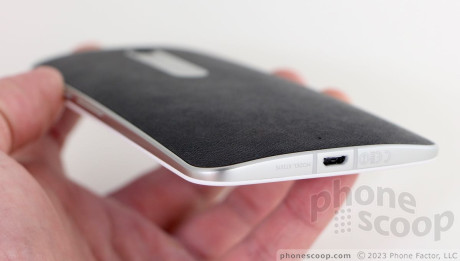
Motorola's 2015 flagship smartphone is a pleasing upgrade to last year's device, thanks to the bigger screen, better battery life, and improved camera. This handset offers a pure version of Google's Android platform with truly useful additions from Motorola. Here is Phone Scoop's in-depth review.
Hardware
Is It Your Type?
The Moto X Pure Edition (AKA Moto X Style in some places) is for people who want a flagship smartphone, but perhaps don't want to part with the cash to get one. The Moto X may not play in quite the same space as the high-end Samsung Galaxy S6 or Apple iPhone, but the Moto X's lower price point and solid spec sheet makes it just as appealing, if not more so.
Body
The Moto X Pure Edition is an evolutionary product that refines the design of the 2014 model while also adding girth and an updated set of capabilities.

This year's Moto X is decidedly bigger than last year's, but at least it is not as large as the Motorola Nexus 6. It weighs in at 6.31 ounces, which is a 1.23-ounce increase over the 2014 model. (The 2015 Moto X absolutely dwarfs the 2013 Moto X.) Thankfully, Motorola carried over some of the best characteristics, such as the rounded rear surface, tapered edges, and customizable designs.
Via Moto Maker, people can design their own Moto X Pure Edition. The front face and aluminum frame combinations are available in three pairs: white/silver, white/champagne, and black/dark gray. The rear shell can be made of plastic, wood, or leather, with multiple options available for each material. The accents (camera module on the back, speaker bars on the front) can be given one of seven colors. Lastly, users can opt to engrave the rear shell and select a custom boot-screen greeting. Motorola allowed us to design our own review unit, so we went with a white face with silver frame, black leather rear shell, and silver accents to match the frame.
(Unlike the original Moto X — which was customized at a plant in Texas in just four days — the Moto X Pure Edition is assembled-to-order in China and requires at least 7-10 days turnaround time.)
The color schemes may vary, but the shape of the phone is the same no matter how you choose to customize the Moto X. The corners are nicely rounded and the phone is significantly thinner at the side edges than it is in the middle. These help the phone sit better in your hand and in your pocket. I found the X was far more comfortable to carry around and use on a daily basis than similar-sized handsets like the Samsung Galaxy S6 Edge+ and iPhone 6s Plus. It's still a big-ish phone, and some people may find it to be too big for daily use, but I was pleased with the phone's usability.
The glass surface fits into the frame snugly on the front, as does the leather skin on the rear. Honestly, I'm not all that impressed with the leather. It feels plastic-y, thin, and delicate. Don't be surprised if the leather becomes marred easily. The plastic and wooden models I handled at the phone's launch event felt a bit sturdier to me. Moreover, the leather rear shell on LG's G4 is thicker and has a more appealing texture. Overall manufacturing quality is high, but your mileage with the various materials will vary.
There's a lot going on with the face of the X. To start, the 5.7-inch screen fills a significant portion of the glass. The side bezels are relatively thin, but there's plenty of real estate above and below the screen. Above, you'll see two sensors, the user-facing camera, and a user-facing flash. The stereo speakers stand out above and below thanks to the accent bar. We chose chrome, but the speakers can stand out even more if you go with a lively color.
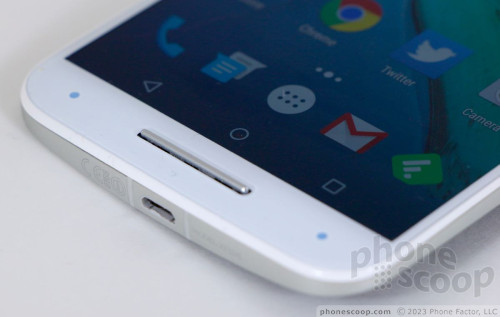
I really like the aluminum frame that forms a band around the entire outer edge of the phone. The chamfered metal has a pleasing look to it. There are no controls on the left edge of the phone, but the right edge holds the volume toggle and screen lock button. The buttons have great profiles and excellent travel/feedback. It is easy to find and use them. I do wish, however, that the screen lock button and volume toggle were reversed; the volume toggle is in the middle of the side edge while the screen lock is close to the top. The headphone jack is on the top and the micro-USB port is on the bottom.
Motorola created a single tray for the Moto X that holds both the SIM card and memory card. The tray is positioned on top and requires a tool to remove. The SIM card actually clicks in tightly, which I appreciate. The memory card doesn't fit as snugly, but isn't going to fall out when you pop out the tray. The battery is sealed inside.
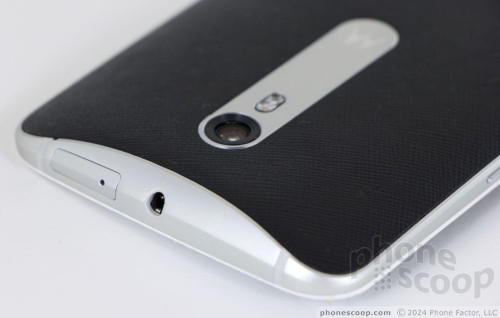
The camera is now integrated into a metal strip on the back surface that measures perhaps two inches long. The camera is at the top of the strip, with the two-tone flash and indented "M" logo below it.
Overall, I dig the Moto X Pure Edition design. The hardware is good, if not great. It may not have the high-end appeal of some competing phones, but the comfortable feel and flexible design options give it something others don't offer.
Screen
The Moto X Pure Edition has a 5.7-inch LCD display with quad HD (2560 x 1440p) resolution. This is a great size/pixel ratio. You can't ask for a (much) sharper display. Everything pops on the screen; it's truly impressive how clear text, pictures, and other content renders on the panel. Colors are accurate. Brightness is good when cranked all the way up, though I found the auto-brightness setting a bit fussy (read: it wasn't quick enough to make the screen brighter when outdoors.) My biggest complaint concerns the poor viewing angles. The panel has a pretty steep brightness drop when tilted even just a little bit. This could be an issue when showing a friend a funny video, for example. The Moto X has a really good screen, but it doesn't match that of the Galaxy Note 5, which has the same size/resolution and better brightness/viewing angles.
Signal
The Moto X Pure Edition comes in a single variant. It supports a wide range of LTE bands, in addition to GSM, EDGE, WCDMA, and CDMA. It's compatible with the networks run by AT&T, Sprint, T-Mobile, Verizon Wireless, and others in the U.S. I tested it on AT&T's network.
The Moto X latched onto AT&T's 4G LTE service everywhere I took it in the greater New York City area. The phone dipped to 3G (HSPA+) a couple of times, but only in poor coverage areas. The Moto X Pure Edition was always able to make and receive calls and never missed any — even when speeding down the highway. I was pleased with data speeds across the board. They were more than adequate for streaming tunes via Spotify, catching up on YouTube videos, and of course sending email, updating Facebook, and downloading apps.
Sound
Like so many handsets, the Moto X Pure Edition is a good voice phone, but not a great one. The majority of calls I took through the phone exhibited solid quality and reasonably good volume. The earpiece doesn't go quite as loud as I'd like, and when you turn it all the way up you may notice some distortion in the speaker. I was able to hear calls at home and in the car with the volume set at about 75%, but I needed to turn it all the way up when walking around Manhattan or working in crowded coffee shops.
The speakerphone was somewhat disappointing. Quality and volume are mediocre at best. It might suffice in an office with the door closed, but it wasn't loud enough for the car. Moreover, turning up the volume definitely distorts the speaker.
Ringers and alerts are loud enough to get your attention as long as you have the volume maxed out. The vibrate alert is strong.
The Moto X Pure Edition has stereo speakers. When used for music, the speakers can crank out some serious volume — much more than they do for the speakerphone. They also produce less clipping when blasting tunes. You're not going to be able to fill a large room with sound, but the Moto X is loud enough for sharing videos and listening to music in a smaller, quieter space.
Battery
Motorola increased the Moto X's battery from 2,470 mAh in last year's handset to 3,000 mAh in the 2015 edition. Motorola boldly claims the battery is able to deliver about two full days of life, but that was not my experience. There's no question the battery lasted a full day no matter how little or how intensely I used the phone. Most days, it had some power to spare at bedtime (~30%) so I knew I could use the phone the following morning without plugging it in overnight. It definitely outlasts the Note 5/S6 Edge+, but not the iPhone 6s Plus.
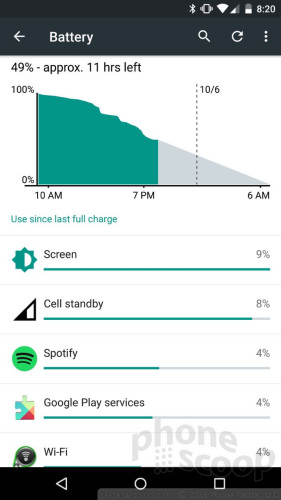
The Quick Charge technology worked great. The battery could charge from 0% to 100% in about two hours. Motorola says it should gain 10 hours of uptime after only 15 minutes of charging time. It's a bummer that the phone doesn't support wireless charging.
The phone includes the basic Lollipop battery saver tool and it worked well with the Moto X. It can be set to come on automatically at 5% or 15%, or you can toggle it on/off manually. It reduces performance and limits vibrations, location services, and background data syncing to push the battery a bit more. Honestly, I don't think most people will need it.
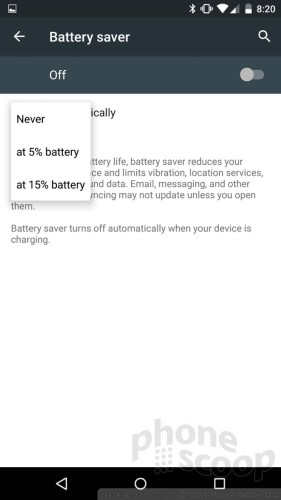
Bluetooth, GPS, NFC, WiFi
The Moto X includes Bluetooth 4.1 and the most common set of profiles. I paired it with a handful of other devices, such as headsets, my car, wearables, and speakers. I thought the quality of phone calls via my car's hands-free system was passable; volume was solid, but clarity wasn't impressive. Music pushed through my best set of stereo headphones was pretty good, but not as impressive as I was hoping it would be.
The GPS radio worked perfectly. The Moto X consistently pinpointed me to within about 25 feet in mere seconds. The GPS radio had no trouble interacting with Google Maps, which showed my exact position on the map.

The 2015 Moto X adds NFC, which I found helpful in pairing the device with NFC accessories, such as Bluetooth speakers. More to the point, the Moto X supports Android Pay via NFC. As long as you have a compatible bank card, the Moto X can serve for tap-and-go payments at participating retailers.

Wi-Fi worked without issue. For example, I was able to use the Moto X Pure Edition to set up and connect to a new Chromecast over the weekend for watching YouTube and listening to Spotify.
Software
Lock Screen
Motorola offers one of the most useful lock screens available to Android handsets. There are three basic settings. Moto Display shows important notifications as simple, interactive icons on the lock screen. Ambient Display wakes the screen regularly with a list of the current notifications in a more detailed way. Last, users can choose to leave the screen dark at all times.
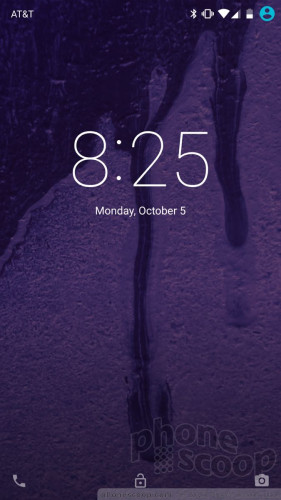
The big difference between Moto Display and Ambient Display is what you see on the lock screen. With Moto Display enabled, you'll see the Gmail logo when a new Gmail arrives, or the SMS logo when a new text arrives. That's all. With Ambient Display, you'll see the exact number of Gmails or text messages you have, and who the most recent one is from. Whichever you choose, the notifications arrive and repeat once and then go away. The clock is displayed whenever notifications arrive. The Moto X is smart enough to keep the screen dark when it senses that the phone is in your pocket or purse, or face down.
The Moto X Pure Edition includes motion detectors, and you can wake the screen by waving your hand over the display. My kids love this feature. A quick pass of your hand over the screen will turn it on so you can see the time and your notifications. Neat. I found the threshold to be about 18 inches; in other words, the Moto X won't wake if you wave at it frantically from across the room.
The Moto X Pure Edition will also wake at the sound of your voice. You have to train the phone with a catchphrase (“Hello, Moto X”, for example), but after that quick process, the phone will turn on and obey your commands when you talk to it. For example, you can make requests to read incoming messages, send replies, and so on.
If you simply press the screen lock button (how quaint!), the display wakes fully to show the clock, wallpaper, and notifications listed below the clock. There are shortcuts to the phone and camera available on this screen.
There's no better phone for handling notifications.
Home Screens
The Moto X ships with a mostly standard version of Android 5.1 Lollipop. Owners of the phone can customize the typical stuff, such as wallpapers, widgets, and so on. The home screen and notification shade behave as expected for a Lollipop device.
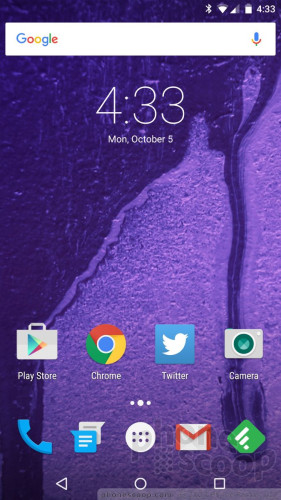
The biggest change I found was in the app drawer. The Moto X Pure Edition populates the top of the app drawer with the four apps you've used most recently. There's no way to adjust this function or turn it off, that I could find. Further, the app drawer is organized vertically instead of horizontally (you swipe up and down rather than side-to-side).
Another major benefit of the Moto X home screen comes from the Moto application. The Moto app bundles together a handful of functions that used to live in separate apps. Moto app controls Ambient Display / Moto Display. It also manages the Moto Assist function, which is used for changing Do Not Disturb settings based on location and calendar. Last, it can handle some gesture-based controls. For example, a quick turn of the wrist will launch the camera, and a quick shake of the phone will launch the camera and immediately fire off a photo.
Motorola has committed to updating the Moto X Pure Edition to Android 6.0 Marshmallow, though it did not say exactly when the update will show up. When it does, some of Marshmallow's new built-in features will replace Moto Assist.
As for performance, the Moto X uses a 1.8GHz hexa-core Snapdragon 808 processor with 3 GB of RAM. This combination worked very well. Every app on the phone performed smoothly and I didn't experience any hiccups or problems. The phone doesn't feel as fast as the Note 5 or the 6s Plus, but it feels fast enough.
Camera
Love it or hate it, Motorola has developed one of the simplest camera apps for its phones. The Moto X largely carries over the same app we saw earlier this year on the Moto G.
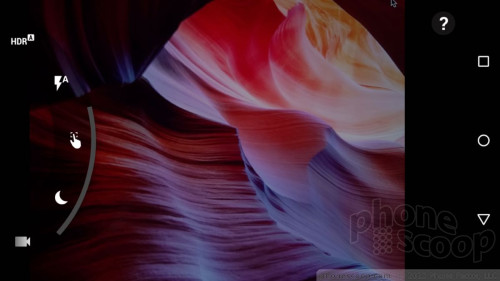
As noted, you can open the camera with gestures. The camera interface, which is spartan at best, provides a tutorial to teach you the basics the first time you use it. There are only two buttons: one for the video camera and another for the user-facing camera. The other controls can only be accessed by swiping from the left side of the viewfinder towards the center.
The settings are arranged in a rotating dial. The Moto X includes HDR, flash, touch-to-focus, night shot, and panorama features — plus some minor settings — all in this single dial. You essentially toggle each feature on or off, or set it to function automatically; that's about it.
The camera has an always-on burst mode. Press the screen and hold, and the X will focus and then capture images continuously until you take your finger off the screen.
Unlike the more powerful camera apps found on LG and Samsung devices, the Moto X does not let users adjust ISO, brightness, or white balance. Nor does the camera include filters or fancy shooting modes. It's a basic shooter, more in line with the features found in Apple's camera app. This may appeal to some and frustrate others.
The camera does function much faster than the camera did on older Motorola smartphones. In fact, I'd say the Moto X Pure Edition has the fastest camera I've seen from Motorola.
Photos/Video
For the third year in a row, Motorola claims the camera in the Moto X is the best it has ever made. I concur, but it's not the best camera on a smartphone.
The Moto X has a 21-megapixel sensor and there's no doubt it performs better than the 13-megapixel shooter on last year's phone. The images are generally sharp (see the stone wall) and have accurate exposure and white balance (see the street photo). Not all the images are perfect, but the majority of them turn out well.
Motorola says low-light shots should be much improved over previous phones, and that's true, too. The bar here wasn't very high, however, as Motorola's older phones had rather poor low-light performance. The Moto X does better in low light, but the LG G4, Samsung Note 5, and iPhone 6s Plus do better.
In 2014 and 2013, I was hesitant to carry the Moto X thanks to the inconsistent camera performance. This year, I'd happily carry around the Moto X Pure Edition and trust it to take care of my everyday photography needs.
The Moto X's selfie cam captures 5-megapixel images and has a wide, 87-degree field of view. I was pleased with the results. Shots taken outdoors looked genuinely good, and the selfie flash definitely helps in low-light environments.

The video camera does a very good job capturing 1080p HD video. (There's rarely a good reason to shoot in 4K.) The phone did a great job with focus, exposure, and white balance. The video footage I captured looked very good when blown up on my monitor. The 720p slo-mo video is fun to shoot in, too, and the quality was solid.
As with the camera, I'd happily use the Moto X for daily video needs.
Bloatware
Motorola is selling the Moto X directly to consumers online. AT&T, Verizon, and other carriers are not selling the Moto X, which is a big blow to Motorola. Without carrier sales channels, consumers have to actively seek out the Moto X on their own. This could prove challenging to Motorola, which has already seen sales decline steadily over the last few years. The Moto X is its flagship product, and it's hard to imagine sales taking off if consumers don't see it side-by-side with competing phones on store shelves.
That said, the Moto X is only pre-loaded with extra apps from Motorola itself. Unlike the manufacturer apps made by Motorola's competitors, its software (Moto Assist, Ambient Display) actually benefits users. There is no bloatware from carriers.
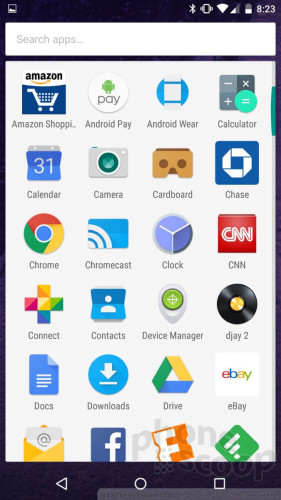
Wrap-Up
I genuinely like the Motorola Moto X Pure Edition and see plenty of value in what it offers.
First, no other company lets you customize the appearance of your phone to the extent Motorola does. The handset comes in an attractive variety of finishes, materials, and colors, and Motorola does a good job putting it all together.
The phone handles the basics well. The screen is good, call quality is decent, wireless performance is excellent, and battery life is well above average. The base Android operating system performs flawlessly on the Moto X, and Motorola's tasteful software additions make the Moto X an intuitive and useful companion. Motorola made significant gains with the camera this year. It's not the best-ever, but it finally performs at a level befitting the phone's price point.
Speaking of which, that's where the Moto X's real value rests. The phone costs $399 (for the base configuration), which is $250 less than many competing devices. Adding extra storage capacity and leather/wood materials boosts the price a bit, but you're still looking at a phone that's $200 cheaper than its peers.
The Moto X offers about 85% of the performance of Samsung's Galaxy Note 5 or the iPhone 6s Plus, for less than 2/3 the price. That's a bargain in my book.
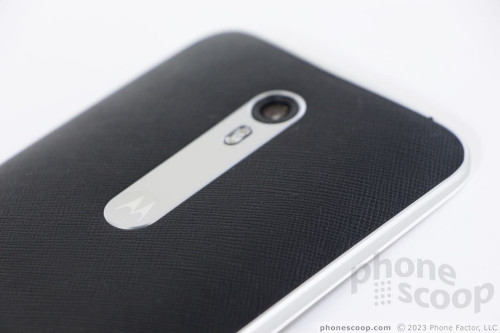
Comments
Awesome device!
T-Mo only had LG/Samsung/Apple devices (ugh), which were either expensive or older.
Best Buy had the MotoX Pure in their unlocked section, and at $450 it was a better deal than anything T-Mo was peddling.
Pros: Awesome 1440x2560 screen (gorilla glass) and VERY bright
Fast - much faster than my Nexus 6
Camera - very nice
Supports T-Mo HD voice (even though not listed on here)
Turbo Charging
Loud speakers
Cons: Motorola still around ?
Not many accessories
Not sold for any carrier directly
Moto x pure - terrible tech support
After doing my own resea...
(continues)

















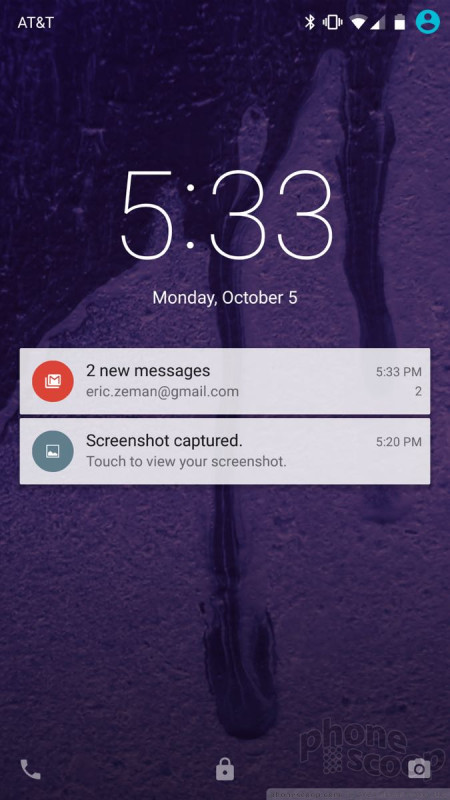




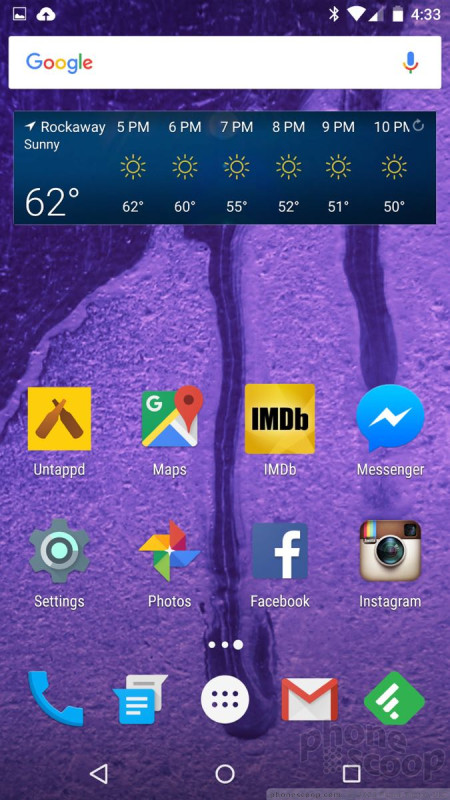






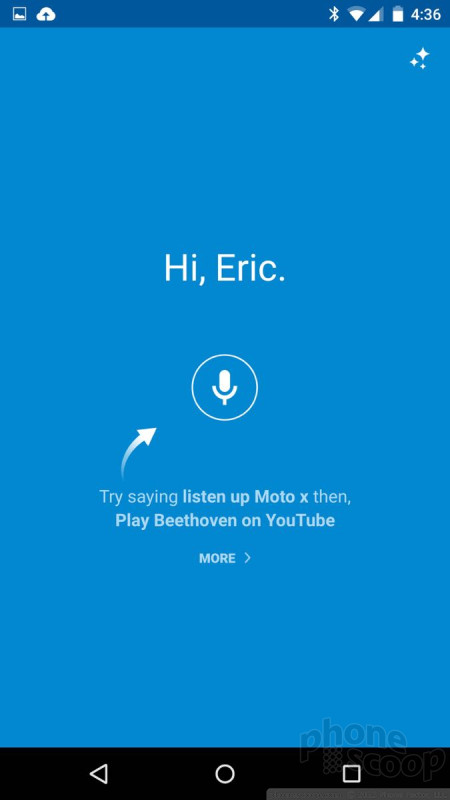

























 Hands On with the Moto X
Hands On with the Moto X
 Liveblog of Motorola 2015 Event
Liveblog of Motorola 2015 Event
 Republic Wireless Improves Android Lineup
Republic Wireless Improves Android Lineup
 Best Buy Selling Moto X Pure Edition
Best Buy Selling Moto X Pure Edition
 Motorola Updates Camera, Gallery Apps
Motorola Updates Camera, Gallery Apps
 Motorola Moto X Pure Edition / Style
Motorola Moto X Pure Edition / Style










